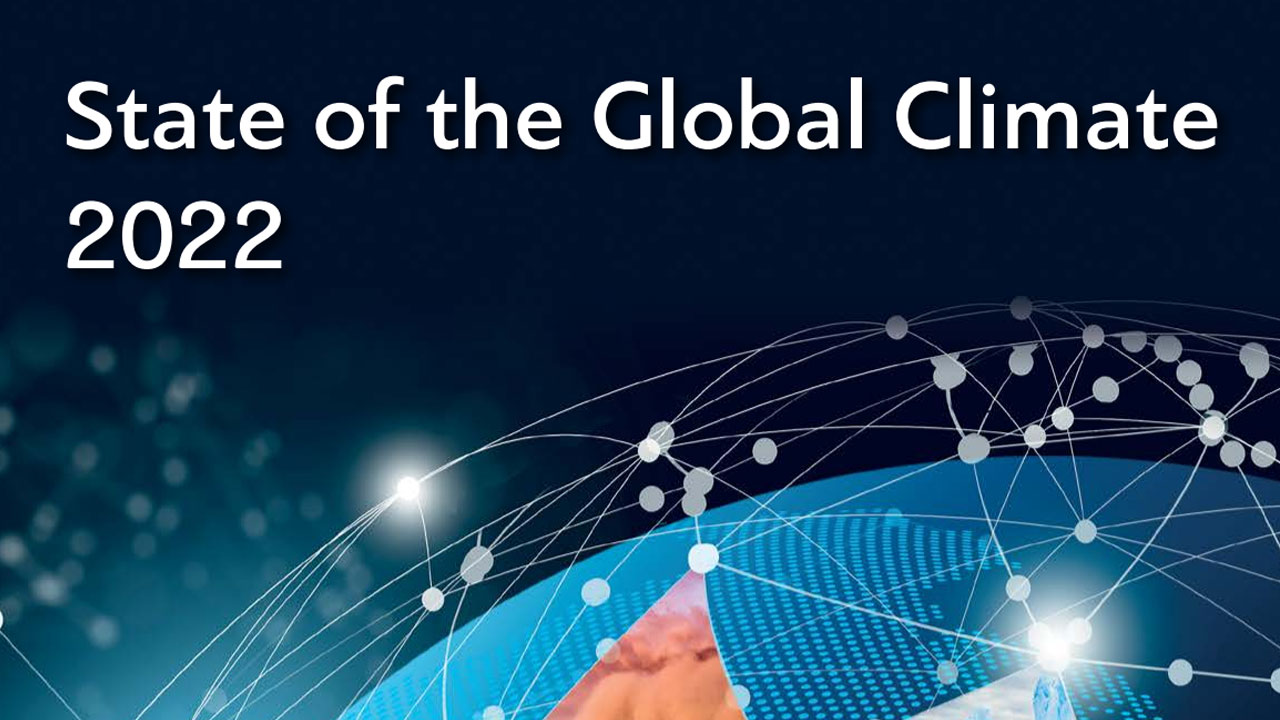WMO: The State of the Global Climate 2022
The World Meteorological Organization has released its annual report on the global climate for 2022, revealing record-breaking heat, melting glaciers, and rising sea levels.

World Meteorological Organization Report 2022
Summary
The State of the Global Climate 2022 shows the planetary scale changes on land, in the ocean and in the atmosphere caused by record levels of heat-trapping greenhouse gases. For global temperature, the years 2015-2022 were the eight warmest on record despite the cooling impact of a La Niña event for the past three years. Melting of glaciers and sea level rise – which again reached record levels in 2022 – will continue to up to thousands of years.
“While greenhouse gas emissions continue to rise and the climate continues to change, populations worldwide continue to be gravely impacted by extreme weather and climate events. For example, in 2022, continuous drought in East Africa, record breaking rainfall in Pakistan and record-breaking heatwaves in China and Europe affected tens of millions, drove food insecurity, boosted mass migration, and cost billions of dollars in loss and damage,” said WMO Secretary-General Prof. Petteri Taalas.
- Drought, floods and heatwaves affect large parts of the world and the costs are rising
- Global mean temperatures for the past 8 years have been the highest on record
- Sea level and ocean heat are at record levels – and this trend will continue for many centuries
- Antarctic sea ice falls to lowest extent on record
- Europe shatters records for glacier melt
“However, collaboration amongst UN agencies has proven to be very effective in addressing humanitarian impacts induced by extreme weather and climate events, especially in reducing associated mortality and economic losses. The UN Early Warnings for All Initiative aims to fill the existing capacity gap to ensure that every person on earth is covered by early warning services. At the moment about one hundred countries do not have adequate weather services in place. Achieving this ambitious task requires improvement of observation networks, investments in early warning, hydrological and climate service capacities,” he said.
The new WMO report is accompanied by a story map, which provides information for policy makers on how the climate change indicators are playing out, and which also shows how improved technology makes the transition to renewable energy cheaper and more accessible than ever.
In addition to climate indicators, the report focuses on impacts. Rising undernourishment has been exacerbated by the compounded effects of hydrometeorological hazards and COVID-19, as well as of protracted conflicts and violence.
Throughout the year, hazardous climate and weather-related events drove new population displacement and worsened conditions for many of the 95 million people already living in displacement at the beginning of the year, according to the report.
The report also puts a spotlight on ecosystems and the environment and shows how climate change is affecting recurring events in nature, such as when trees blossom, or birds migrate.
About the Author: CLIMATE STATE
POPULAR
COMMENTS
- Robert Schreib on Electricity generation prices may increase by as much as 50% if only based on coal and gas
- Robert Schreib on China made a historic commitment to reduce its emissions of greenhouse gases
- Lee Nikki on COP30: Climate Summit 2025 – Intro Climate Action Event
- Hollie Bailey on Leaders doubled down on fossil fuels after promising to reduce climate pollution
- Malcolm R Forster on Mythbusters tests global warming theory – does CO2 warm air?